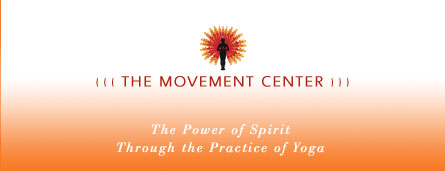


|
 |
 |
|||||
|
SWAMI CHETANANANDA |
FAQs ABOUT MEDITATION Where is the best place to meditate? Swami Chetanananda: Prepare a special place for your meditation practice, a clean and uncluttered space that reflects your respect for the practice and your effort. If you can, try to set this place aside for meditation only, making it special with fresh flowers, incense, and some of your favorite beautiful things. When is the best time for meditation? Swami Chetanananda: Find the time that works best for you. Many people like to start their day with a period of meditation; another popular time is early evening - after your work day and before the evening. Whatever time you choose to sit, the most important thing is to develop a pattern, making the effort to sit every day at the same time and in the same place. In this way, you develop an appetite for it, and the pattern itself will support you in your desire to practice regularly. How long should meditation last? Swami Chetanananda: About 45 minutes is ideal, but on some days you may not have 45 minutes. On these days, instead of saying, "Oh, I don't have time, I guess I won't meditate today," just sit for as long as you can. Make it your commitment to sit for at least 15 minutes very day - no matter what. This simple discipline will support your practice enormously. How often should one meditate? Swami Chetanananda: You should sit at least once every day. If your schedule allows and you find you have the interest, many people like to sit both in the morning and in the evening. Again, the most important factor as you begin is to develop a simple pattern that you can easily incorporate into your day. The pattern itself will support you as you go on. Is there a "right" or "wrong" type of meditation experience? Swami Chetanananda: Miracles are possible every time you sit. You will have every kind of experience in your inner practice, from completely constricted to totally open and flowing, Remain centered and focused through every kind of experience, allowing it to become part of the flow of energy. You will develop the ability to absorb everything deeply within yourself, turning every experience into fuel for your growth. What are the most important elements of a spiritual practice? Swami Chetanananda: To develop a deep spiritual practice, one needs instruction in some techniques of meditation, an introduction to the philosophical underpinnings of those techniques, the guidance of an acknowledged teacher, and a guided meditation to follow as often as you like. All you need to add is your desire for growth and your simple, determined effort, every day. Make a commitment to your own growth. All it takes is a quiet place, a few minutes of uninterrupted time, and a commitment to do it. Remember, the only way to understand meditation is to experience it. Why is meditation an important part of the practice at Nityananda Institute? Swami Chetanananda: Unlike systems that rely primarily on either scriptural authority or strict logic and reason, Kashmir Shaivism emphasizes the direct, personal experience of its practitioners - from the ancient scholars of India to you and me. You are encouraged to explore the teachings and test and retest them every day in your own practice. This simple approach is profoundly different from filling up your head with ideas. The goal is to experience, firsthand, the infinite nature of the inner Self. Learning about meditation is part of the on-going dynamic discovery of your own true nature. It is your discovery. The grace of the teacher and the techniques of the practice will lead you to the door of that discovery and even suggest to you how to open it - but only you can actually do it, and only you can walk through. The choice is yours to make, at your own pace and of your own free will. Why should we take up a spiritual practice? Swami Chetanananda: In my experience of the last thirty years of being involved in the world as well as building a spiritual community and teaching, the only thing that I have ever experienced that brings a permanent sense of meaning, richness, and depth to people's lives is a spiritual practice: continuously, daily reaching within ourselves, looking inside, opening ourselves up, finding our creative center and cultivating the unfoldment of that. It is a real endeavor - it is not a joke, it is work. But it is a work that allows whatever else we do with our lives - whatever other way we spend our days - to become permeated with enthusiasm, with joy, with vitality, with excitement, with a continuous, unbroken sense of upliftment, even when it is very difficult. So, I'm not particularly concerned with where you pursue this endeavor or in what form you pursue it, but I really encourage you to pursue the unfoldment of your own inner Self in whatever way you personally find comfortable. And in this endeavor, sincerely, I wish you well. HOME | CONTACT | SITE MAP | LINKS | ARCHIVES | © 2005-2008 THE MOVEMENT CENTER, INC. |
n e w s THIS SITE WILL NO LONGER BE UPDATED AS OF SEPTEMBER 15, 2008. VISIT THE NEW MOVEMENT CENTER SITE Four Elements of Meditation Course Begins Wednesday, September 17 E-mail Archive c a l e n d a r Monthly Program Schedule Weekly Program Schedule Programs with Lama Wangdu Rinpoche Next Queen Of Great Bliss Puja: 9/21/08 Next Service Day: 9/06/08 Winter Retreat: December 27 through January 31, 2008 a r t i c l e s NEW! The Heart of the Matter by Swami Chetanananda (from a talk given January 22, 2008, Portland) NEW! Living in Our Real Life by Swami Chetanananda (from a talk given November 19, 2007, Portland) Updated September 5, 2008 |
||||